-
Posts
679 -
Joined
-
Last visited
-
Days Won
2
Content Type
Profiles
Forums
Blogs
Gallery
Events
Store
Posts posted by Lukasz Gaszewski
-
-
I vote for the Kriegsehrenzeichen 1916-18 or Ehrenzeichen für Kriegsfürsorge with the colours faded. The Order of the Rose is possible, though not very likely, the Order of St. Hermenegild is practically excluded, as it was conferred only to Spanish forces officers for long service.
0 -
BTW: the bar is turned upside down. The ribbon of the Order of St. Vladimir should go first.
2 -
Hello everyone and let me share some thoughts on that photo.
At this moment I cannot tell you who the gentleman is, although his face does not seem alien to me. Maybe I'll try to find out later. Anyway, he is wearing the uniform of a lieutenant general (I think I see three stars on the epaulettes), the type that was worn in 1860s and 1870s.
I think your identification of the medals is ok, only IMHO the first medal is for the suppression of Hungary and Transylvania in 1849, rather than for defence of Sevastopol.
What you call Virtuti Militari, was officially named the Polish Deoration of Honour. It had almost identical form as Polish VM, but had little to do with it, as it was conferred to Russian troops that took part in the suppression of the Polish rising in 1831. The fact that it is only the lowest, 5th class (and I agree it is) means he must have been in the ranks when he received it.
I am also sorry to say that the gentleman does NOT have the Order of St. George 2nd Class ? The white neck cross is of the Prussian Order of Red Eagle 2nd Class and the star below the star of St. Stanislas is probably from it as well. The overlying dark cross is of the Order of St. Vladimir 3rd Class. A Russian officer would probably not let the Order of St. Vladimir cover up that of St. George, especially on the official photo, and he would certainly never let the star of St. George be worn below that of St. Stanislas - the lowest order in the Russian honours system.
Interestingly, the Order of St. Vladimir seems to not have swords, so it was probably awarded before 1855.
The photo itself must have been taken not earlier than in 1865, for it was then that the Medal for suppression of Polish revolt was established.
BTW: it is certainly not Carl von Dahen. As you can see, the man on the photo participated in the suppression of the 1830/31 rising and v. Dahen was born in 1838.
0 -
Is there a list of GC recipients?
0 -
With all respect, I have serious doubts if that could be the Order of St. Henry - for at least two reasons: firstly, it looks quite different - the arms are clearly all covered with white enamel, while those of St. Henry were gold with white frames (cf. the cross on the Duke's hip) and the devices between the arms (whatever they can be) are of almost the same height as the arms themselves. Secondly, at that time multiple classes of the same order were never worn together, which seems quite logical. If a patricular class should represent the recipient's position within the order, only the highest class ought to be worn (you cannot be a lieutenant and a colonel at the same time). It was only in the second half of 19th century that some countries allowed wearing all classes of the orders received. So the Duke would not have been wearing more than one class, even if he had happened to have more (which he probably didn't).
I think the Order of the Netherlands Lion would have been a good guess, had not that wretched light blue ribbon. My second guess, the Guelphic Order should be rejected too, as it did not look like that, either. My third guess was the French Order of Military Merit. Ernst would certainly have been eligible (he was Lutheran). The problem is that under king Louis XVIII the order was no longer worn on a blue ribbon but on a red one, just like the Order of St. Louis.
0 -
Dear Laurentius,
thank you very much for the quick answer.
The Order of the Netherlands Lion was one of my guesses as well. Honestly, i did not think of the Saxon Merit Order at all, although considering the date of establishment (1815) it would be matching, too. I am quite suspicious about both though, due to the distinctly light blue ribbon of the cross on the picture. Dawe used to be very precise about the details of the decorations he was painting and I think that if he painted the ribbon light blue, it was light blue, indeed. For that reason my other guess was the Hanoverian (and British) Guelphic Order, but I think it should look more golden in appearance and have ball finials.
Still, the Order of the Netherlands Lion does make sense. In 1819, when the portrait was made, there was no reason why the Duke should not be wearing it. But when in 1830 Belgium declared independence and was invaded by Dutch troops the following year, he may have felt uncomfortable continuing to display the order of a country in war with Belgium, ruled by his brother Leopold. He may also have chosen to delete it from the honours he had received, hence it is missing on the official lists. On later portraits the Duke is seen wearing the Belgian Order of Leopold instead.
Do you have any information if the Order Order of the Netherlands Lion has ever been worn on a ribbon in the lighter shade of blue? It would make this hypothesis more likely.
Best,
Lukasz
0 -
Could someone kindly help identify the circled cross from the portrait of Duke Ernst I of Saxe-Coburg and Gotha? The portrait was made by Dawe in 1818 or 1819 and is part of the Royal Collection at Buckingham Palace. The cross seems to be out of the list of Duke's honours.
And a blow-up of the Duke's awards:
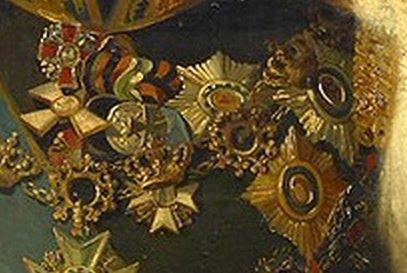 0
0 -
Yes, it is likely to be the Hungarian Order of Merit, Commander class.
I have found another photo of Paul Fanger, already as admiral with, I think, the same breast star. It is clearly visible here that this is the star of Grand Officer of the Order of the Crown of Italy.
Of course, the star on the first photo can be of a different order and then it can be that of the Spanish Order of Naval Merit (con distintivo blanco) as well.
0 -
I agree. Although the sequence of the decorations is a bit odd.
0 -
On 30/06/2020 at 04:19, freiherr said:
I can't figure for the life of me what is the next to the Redeemer on the spange, or the last one. The "continental old style" ribbon and what looks like a crown at the top of the round medal makes this unlikely to be a British medal.
It looks like either the Russian Order of St. Andrew (albeit it is seldom seen worn like that) or Russian Order of the White Eagle (more likely to be worn in that manner). Considering the Duke's status, I would vote for the first. I cannot figure out either, what the silver medal could be.
0 -
If I were to compare the Grunwald badge to a military counterpart from another country, I would point to the U.S. Combat Infantryman Badge (CIB), with the difference that unlike the latter, the Grunwald badge was not limited to infantry, but could be granted to other services as well. Still, the direct participation in combat was the necessary condition. Similarly, just like the CIB, which was normally not granted to the ranks above colonel, but could be conferred to a general on an honorary basis, the Grunwald badge could be bestowed upon generals, and in that case it was made of a silver rather than bronze metal, although that was never formally established, as far as I know.
The Grunwald badge was worn on the left pocket of the uniform.
1 -
Typical of British collars. Different person, different era, same order (well, almost), same ties. Field Marshal Alan Brooke in all his glory (courtesy Defence Academy, UK - https://www.artuk.org/discover/artworks/field-marshal-viscount-alanbrooke-18831963-kg-gcb-om-gcvo-dso-42715).
0 -
It is the cross (order) of the Royal Confraternity of the Cubicular Knights of St. Ildefonsus and St. Attilanus of Zamora (Real Cofradía de Caballeros Cubicularios de San Ildefonso y San Atilano de Zamora). The ribbon should be green with red side stripes.
Here is the website of the Confraternity:
0 -
It looks like the ribbon of the Romanian Bărbăție și Credință Medal.
0 -
¡Hola Antonio!
I am not sure about the said period, but in the first half of 19th century Theresianum pupils used to wear dark uniforms, with Litzen on collar.
Attached is a miniature portrait, dated 1834, of the future well-known Polish painter Henryk Rodakowski, depicted as an 11-year-old boy, in the Theresianum uniform (courtesy National Museum, Warsaw).
The uniform worn by the future king seems to be kind of similar to Rodakowski's jacket (albeit with double button rows and without epaulettes), so still Theresianum rather than Sandhurst. Besides, he entered Sandhurst in 1874, when he was 27. On the photo he looks younger.
I wondered at first if that was not the uniform of Collège Stanislas de Paris, where Alfonso was educated, but it looks different (courtesy https://les8petites8mains.blogspot.com/2018/09/histoire-de-l-uniforme-scolaire-en.html?
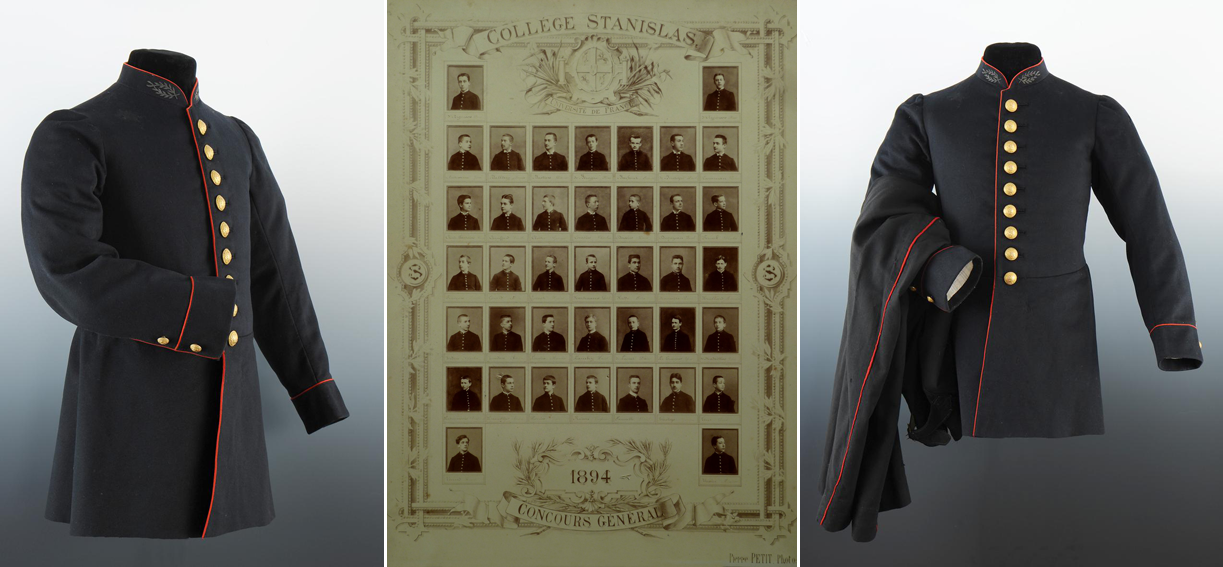
Here is a link to the picture of a parade of the Theresianum cadets from late 19th/early 20th century:
https://en.wikipedia.org/wiki/File:Maly_Defilierung_des_Akademikerbataillons.jpg
0 -
I wonder what "Krakau" by Artur Müldner's name can mean (assuming he was that captain). As far as I know there is no any particular sea in Cracow. Perhaps it was the current living place of the person. Admiral Juliusz Ripper (died in 1914 just a few weeks before the outbreak of WWI) also lived in Cracow upon retirement.
0 -
1. Preußen - Königlicher Kronen-Orden II Kl. am Kriegsband
2. Preußen - Roter Adlerorden II Kl.
3. Rußland - St. Stanislas-Orden (I Kl. ?)
4. Oldenburg - Haus- und Verdienstorden des Herzogs Peter Friedrich Ludwig - Großkomtur
5. Oldenburg - Haus- und Verdienstorden des Herzogs Peter Friedrich Ludwig - Großkomtursstern
6. Preußen - Dienstauszeichnung für Offiziere
7. Preußen - Kriegsdenkmünze für 1864
8. Preußen - Roter Adlerorden II Kl. - Stern
9. Preußen - Königlicher Kronen-Orden II Kl. - Stern
10. Herzoglich Sachsen-Ernestinischen Hausorden - Großkreuzstern
11. Österreich - Franz-Joseph-Orden - Großkreuzstern
12. Rußland - St. Anna-Orden I Kl. (should be won on the right side)
The sash is of the Sachsen-Ernestinischen Hausorden
13. Preußen - Königlicher Kronen-Orden II Kl. am Kriegsband
14. Preußen - Roter Adlerorden II Kl.
15. Oldenburg - Haus- und Verdienstorden des Herzogs Peter Friedrich Ludwig - Großkomtur
16. Rußland - St. Stanislas-Orden (I Kl. ?)
17. Preußen - Dienstauszeichnung für Offiziere
18. Preußen - Kriegsdenkmünze für 1864
19. Preußen - Kaiser Wilhelm-Centenarmedaille
20. Preußen - Roter Adlerorden - Stern I Kl.
21. Oldenburg - Haus- und Verdienstorden des Herzogs Peter Friedrich Ludwig - Großkreuzstern (?)
22. Herzoglich Sachsen-Ernestinischen Hausorden - Großkreuzstern
23. Rußland - St. Anna-Orden I Kl. (should be won on the right side)
24. Österreich - Franz-Joseph-Orden - Großkreuzstern
The sash is of the Roter Adlerorden I Kl.
0 -
On the left side there are two Orders of Bravery, Medal of Bravery and star of the Order of Republic (the class is impossible to tell with that resolution). On the right side there is the medal "Freedom to People - Death to Fascism", the medal "10 Years of Yugoslav Army" and two Russian commemorative medals for WWII. On the jacket lapel there is the Order of Labour, most probably 3rd class. The two remaining medal are too indistinct to tell.
0 -
I have an extra question: the first medal is worn on a red ribbon with black edges, while that of the other medal is plain red. Does anybody know if these are the correct ribbons for both classes?
0 -
I agree - they are two different medals.
0 -
With all respect, but I will insist on Baden - for at least two reasons:
1. the eyelet - typical of Baden's medals. Can you think of any other German-speaking country's medals with the eyelets like that?
2. the ribbon - I will insist that the edges are white, not yellow like in those Anhalt or Mecklenburg medals shown above. Yellow used to come out quite dark on old photos - just have a look at the prince's Militärverdienstkreuz of Mecklenburg-Schwerin. Its ribbon should have yellow and red edges and the yellow look even darker than the red. The sequence of colours on the ribbon of our researched medal (dark with dark side-stripes and white edges) matches the ribbon of the Friedrich-Luisen-Medaille.
0 -
Good photos, Bob! You have made me want to visit the museum, when I am in Dresden next time. Still, I think all the museum collections will not counterbalance the loss of the Diamond and Ruby Suits of the Order of the White Eagle, stolen from Grünes Gewölbe last year.
BTW: times do change. When I lived in Germany in 1990s it was impossible to see any items with Hakenkreuz symbols on display in public. Even in a museum! Now it seems very different indeed.
0 -
I think that despite the lack of the word "order" in its name it fulfills the role of a diplomatic order for foreign nationals in three classes: Grand Cordon, Commander with Star and Commander. Quite strange they did not think of a collar for heads of state. I am glad Donald Tusk is a recipient.
The medals of Professional Appreciation, despite being formally a separate award, seem to be attached to the order.
0 -
4 hours ago, 1812 Overture said:
Are these two people the same person? I think Europeans look alike. . .
Definitely the same gentleman, a Hungarian officer. He even has the same set of decorations. On the second photo he is in the uniform of a major-general. On the first photo is he is in the Hungarian attila uniform of hussar cavalry, already in the rank of lieutenant-general.
I think I have seen his photo before, but I cannot recognize him right now.
0



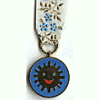

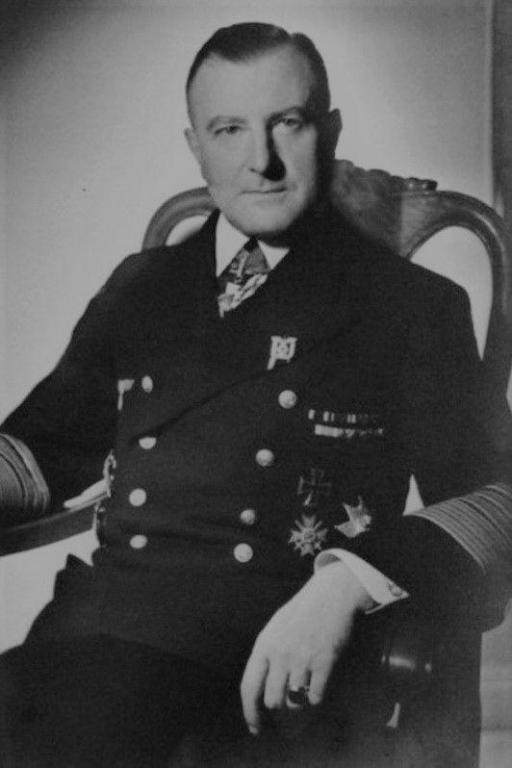
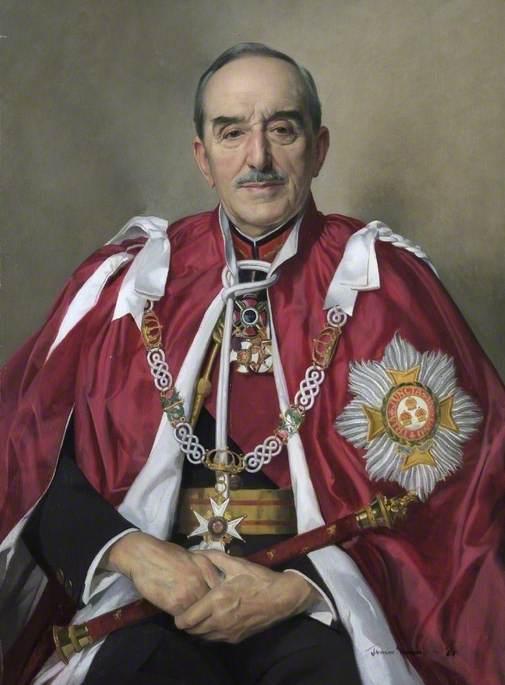
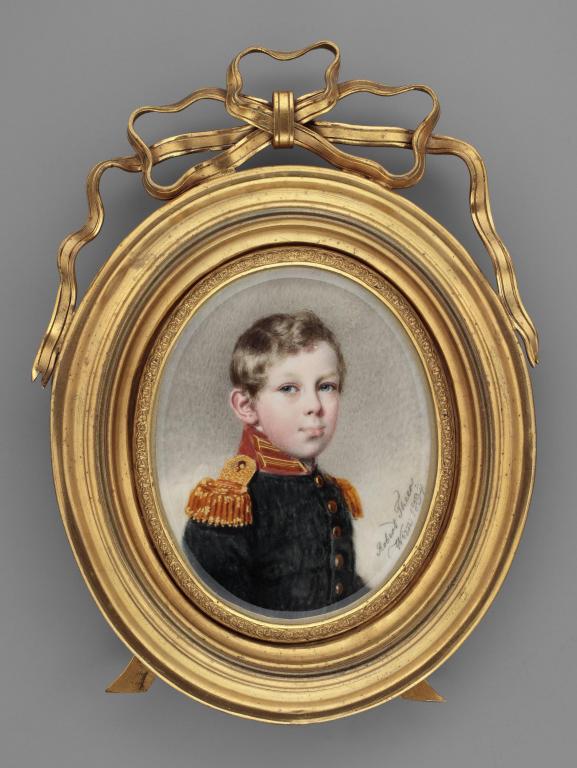
Polish Badge 1
in Central & Eastern European States
Posted
Simius Rex is right. A contemporary copy of moderate quality.